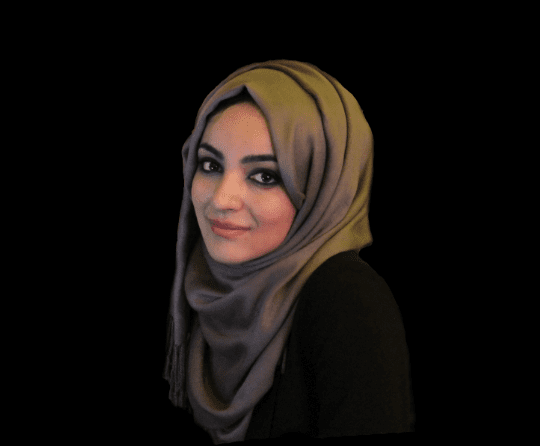Ravaged by two devastating wars in the 1990s, Grozny, the capital city of the Republic of Chechnya, became known as ‘the most destroyed city on earth’.
For the past two hundred years, the Chechens, a largely Muslim ethnic group that has lived for centuries in the mountainous North Caucasus region, have resisted Russian rule and enjoyed varying degrees of de facto autonomy.
After the collapse of the Soviet Union in 1991, Chechen separatists in the newly formed Russian Federation Republic of Chechnya launched a coordinated campaign for independence from the Russian Federation.
![Chechen civilians walk past the remains of buildin Chechen civilians walk past the remains of buildings in Grozny on 1 January, 1995 [OLEG NIKISHIN/AFP/Getty Images]](https://i0.wp.com/www.middleeastmonitor.com/wp-content/uploads/2021/01/Chechnya.jpg?w=797&h=531&ssl=1)
![RETRO-CHECHNYA-WOMAN CRIES A Chechen woman cries as she walks past buildings that were destroyed during combats between Russian troops and Chechen soldiers in Grozny, Russia on on 28 December 1994 [HECTOR MATA/AFP/Getty Images]](https://i0.wp.com/www.middleeastmonitor.com/wp-content/uploads/2021/01/Chechnya_2.jpg?w=395&h=264&ssl=1)
![RETRO-CHECHNYA-PIANO A Chechen separatist fighter plays piano 27 December 1994 in Grozny, Russia [OLEG NIKISHIN/AFP/Getty Images]](https://i0.wp.com/www.middleeastmonitor.com/wp-content/uploads/2021/01/Chechnya_3.jpg?w=395&h=263&ssl=1)
The Second Chechen War in 1999 ended the de facto independence of the Chechen Republic of Ichkeria, won after the First Chechen War, and restored Russian federal control over the region.
Grozny was the epicenter of fighting. By 2003, no building in the city was left undamaged. Since then, Grozny has undergone a massive facelift with a mega reconstruction program funded by Moscow.
Today, lavish high-rise buildings and skyscrapers define the skyline of the once war-torn metropolis, as do the soaring minarets of one of the largest mosques in the Russian Federation; ‘The Heart of Chechnya’.
![Akhmad Kadyrov Mosque, known as 'Heart of Chechnya' (L), dominating the skyline in the Chechen capital Grozny on 14 April 2012 [STR/AFP/Getty Images]](https://i0.wp.com/www.middleeastmonitor.com/wp-content/uploads/2021/01/Akhmad-Kadyrov-Mosque.jpg?resize=1200%2C800&ssl=1)
Akhmad Kadyrov Mosque, known as ‘Heart of Chechnya’ (L), dominating the skyline in the Chechen capital Grozny on 14 April 2012 [STR/AFP/Getty Images]
Like many newly built structures in the city, the mosque was named after the first president of the Republic of Chechnya and the father of its current leader.
![Chechen special forces officers ride atop an armoured personnel carrier during Victory Day parade in front of the Akhmad Kadyrov Mosque in central Grozny, on 9 May 2013 [ELENA FITKULINA/AFP/Getty Images]](https://i0.wp.com/www.middleeastmonitor.com/wp-content/uploads/2021/01/Chechen-special-forces-.jpg?resize=500%2C333&ssl=1)
Chechen special forces officers ride atop an armoured personnel carrier during Victory Day parade in front of the Akhmad Kadyrov Mosque in central Grozny, on 9 May 2013 [ELENA FITKULINA/AFP/Getty Images]
Islam was first introduced into the Caucasus region by Muslim traders in the eighth century following the Muslim conquest of Persia, but it did not spread as far and wide into the mountainous region until the nineteenth century when Caucasian tribes sought the help of the Ottoman Empire against threats of invasion posed by the Russian Empire.
Influenced by Ottoman Turks, many Caucasian tribes who resisted Russian control, including Chechens, eventually embraced Islam.
The Akhmad Kadyrov Mosque was indeed commissioned by the mayor of the Turkish city of Konya. Its classical Ottoman design boasts a large dome over the central prayer hall, surrounded by four 62-metre-tall minarets based on Istanbul’s Blue Mosque.
![Chechnya's Ahmad Kadyrov mosque sits in Chechnya's Ahmad Kadyrov mosque sits in central Grozny on 17 October 2008 [KAZBEK BASAYEV/AFP/Getty Images]](https://i0.wp.com/www.middleeastmonitor.com/wp-content/uploads/2021/01/GettyImages-83320498-scaled.jpg?w=426&h=510&ssl=1)
![Chechen men pray during the muslim Frida Chechen men pray in a mosque in Grozny on 11 March 2011 [MIKHAIL MORDASOV/AFP/Getty Images]](https://i0.wp.com/www.middleeastmonitor.com/wp-content/uploads/2021/01/mosque-in-Grozny-.jpg?w=766&h=510&ssl=1)
The mosque’s exterior walls are covered in travertine marble, while the interior walls are adorned with white marble which was mined in the Marmara island in the Sea of Marmara.
The mosque, which can hold 10,000 worshippers, has 36 chandeliers modelled after Islam’s three holiest sites; the Dome of the rock in Jerusalem, Al-Masjid Al-Nabawi in Madinah, and the Kaaba in Makkah.
Although in many ways the mosque resembles the architecture of numerous mosques found across Turkey today, witnessing the call to prayer echoing across the once war-ravaged city on any given Friday and drawing in thousands of Chechens who gather to perform congregational prayer in peace, healing the invisible scars of war which linger underneath, makes it worth the visit.
![Fireworks explode over the Akhmad Kadyrov mosque in Grozny, Chechnya late on 9 March 2009 [VISKHAN MAGOMADOV/AFP/Getty Images]](https://i0.wp.com/www.middleeastmonitor.com/wp-content/uploads/2021/01/Fireworks-explode-over-the-Akhmad-Kadyro.jpg?resize=1200%2C800&ssl=1)
Fireworks explode over the Akhmad Kadyrov mosque in Grozny, Chechnya late on 9 March 2009 [VISKHAN MAGOMADOV/AFP/Getty Images]











